本篇文章主要介紹了用ES6的class模仿Vue寫一個雙向綁定的範例程式碼,內容挺不錯的,現在分享給大家,也給大家做個參考。
本文介紹了用ES6的class模仿Vue寫一個雙向綁定的範例程式碼,分享給大家,具體如下:
最終效果如下:

建構子(constructor)
#建構一個TinyVue對象,包含基本的el,data,methods
class TinyVue{
constructor({el, data, methods}){
this.$data = data
this.$el = document.querySelector(el)
this.$methods = methods
// 初始化
this._compile()
this._updater()
this._watcher()
}
}#編譯器(compile)
用於解析綁定到輸入框和下拉框的v-model和元素的點擊事件@click。
先建立一個函數用來載入事件:
// el为元素tagName,attr为元素属性(v-model,@click)
_initEvents(el, attr, callBack) {
this.$el.querySelectorAll(el).forEach(i => {
if(i.hasAttribute(attr)) {
let key = i.getAttribute(attr)
callBack(i, key)
}
})
}載入輸入框事件
this._initEvents('input, textarea', 'v-model', (i, key) => {
i.addEventListener('input', () => {
Object.assign(this.$data, {[key]: i.value})
})
})載入選擇框事件
this._initEvents('select', 'v-model', (i, key) => {
i.addEventListener('change', () => Object.assign(this.$data, {[key]: i.options[i.options.selectedIndex].value}))
})載入點選事件
點選事件對應的是methods中的事件
this._initEvents('*', '@click', (i, key) => {
i.addEventListener('click', () => this.$methods[key].bind(this.$data)())
})檢視更新器(updater)
同理先創建公共函數來處理不同元素中的視圖,包括input、textarea的value,select的選擇值,p的innerHTML
_initView(el, attr, callBack) {
this.$el.querySelectorAll(el, attr, callBack).forEach(i => {
if(i.hasAttribute(attr)) {
let key = i.getAttribute(attr),
data = this.$data[key]
callBack(i, key, data)
}
})
}更新輸入框視圖
this._initView('input, textarea', 'v-model', (i, key, data) => {
i.value = data
})更新選擇框視圖
this._initView('select', 'v-model', (i, key, data) => {
i.querySelectorAll('option').forEach(v => {
if(v.value == data) v.setAttribute('selected', true)
else v.removeAttribute('selected')
})
})更新innerHTML
這裡實作方法有點low,只想到正規取代{{text}}
let regExpInner = /\{{ *([\w_\-]+) *\}}/g
this.$el.querySelectorAll("*").forEach(i => {
let replaceList = i.innerHTML.match(regExpInner) || (i.hasAttribute('vueID') && i.getAttribute('vueID').match(regExpInner))
if(replaceList) {
if(!i.hasAttribute('vueID')) {
i.setAttribute('vueID', i.innerHTML)
}
i.innerHTML = i.getAttribute('vueID')
replaceList.forEach(v => {
let key = v.slice(2, v.length - 2)
i.innerHTML = i.innerHTML.replace(v, this.$data[key])
})
}
})監聽器(watcher)
資料變更之後更新檢視
<p id="app">
<input type="text" v-model="text1"><br>
<input type="text" v-model="text2"><br>
<textarea type="text" v-model="text3"></textarea><br>
<button @click="add">加一</button>
<h1 id="您输入的是-text-text-text">您输入的是:{{text1}}+{{text2}}+{{text3}}</h1>
<select v-model="select">
<option value="volvo">Volvo</option>
<option value="saab">Saab</option>
</select>
<select v-model="select">
<option value="volvo">Volvo</option>
<option value="saab">Saab</option>
</select>
<h1 id="您选择了-select">您选择了:{{select}}</h1>
</p>
<script src="./TinyVue.js"></script>
<script>
let app = new TinyVue({
el: '#app',
data: {
text1: 123,
text2: 456,
text3: '文本框',
select: 'saab'
},
methods: {
add() {
this.text1 ++
this.text2 ++
}
}
})
</script>TinyVue全部程式碼
class TinyVue{
constructor({el, data, methods}){
this.$data = data
this.$el = document.querySelector(el)
this.$methods = methods
this._compile()
this._updater()
this._watcher()
}
_watcher(data = this.$data) {
let that = this
Object.keys(data).forEach(i => {
let value = data[i]
Object.defineProperty(data, i, {
enumerable: true,
configurable: true,
get: function () {
return value;
},
set: function (newVal) {
if (value !== newVal) {
value = newVal;
that._updater()
}
}
})
})
}
_initEvents(el, attr, callBack) {
this.$el.querySelectorAll(el).forEach(i => {
if(i.hasAttribute(attr)) {
let key = i.getAttribute(attr)
callBack(i, key)
}
})
}
_initView(el, attr, callBack) {
this.$el.querySelectorAll(el, attr, callBack).forEach(i => {
if(i.hasAttribute(attr)) {
let key = i.getAttribute(attr),
data = this.$data[key]
callBack(i, key, data)
}
})
}
_updater() {
this._initView('input, textarea', 'v-model', (i, key, data) => {
i.value = data
})
this._initView('select', 'v-model', (i, key, data) => {
i.querySelectorAll('option').forEach(v => {
if(v.value == data) v.setAttribute('selected', true)
else v.removeAttribute('selected')
})
})
let regExpInner = /\{{ *([\w_\-]+) *\}}/g
this.$el.querySelectorAll("*").forEach(i => {
let replaceList = i.innerHTML.match(regExpInner) || (i.hasAttribute('vueID') && i.getAttribute('vueID').match(regExpInner))
if(replaceList) {
if(!i.hasAttribute('vueID')) {
i.setAttribute('vueID', i.innerHTML)
}
i.innerHTML = i.getAttribute('vueID')
replaceList.forEach(v => {
let key = v.slice(2, v.length - 2)
i.innerHTML = i.innerHTML.replace(v, this.$data[key])
})
}
})
}
_compile() {
this._initEvents('*', '@click', (i, key) => {
i.addEventListener('click', () => this.$methods[key].bind(this.$data)())
})
this._initEvents('input, textarea', 'v-model', (i, key) => {
i.addEventListener('input', () => {
Object.assign(this.$data, {[key]: i.value})
})
})
this._initEvents('select', 'v-model', (i, key) => {
i.addEventListener('change', () => Object.assign(this.$data, {[key]: i.options[i.options.selectedIndex].value}))
})
}
}以上就是本文的全部內容,希望對大家的學習有所幫助,更多相關內容請關注PHP中文網!
相關推薦:
#
以上是用ES6的class模仿Vue寫一個雙向綁定的例子的詳細內容。更多資訊請關注PHP中文網其他相關文章!
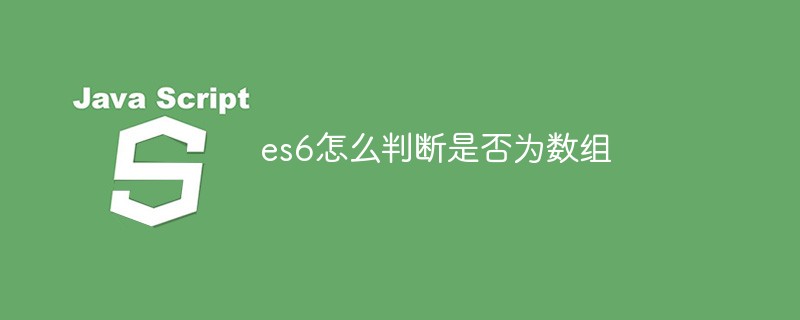 es6怎么判断是否为数组Apr 25, 2022 pm 06:43 PM
es6怎么判断是否为数组Apr 25, 2022 pm 06:43 PM在es6中,可以利用“Array.isArray()”方法判断对象是否为数组,若判断的对象是数组,返回的结果是true,若判断对象不是数组,返回的结果是false,语法为“Array.isArray(需要检测的js对象)”。
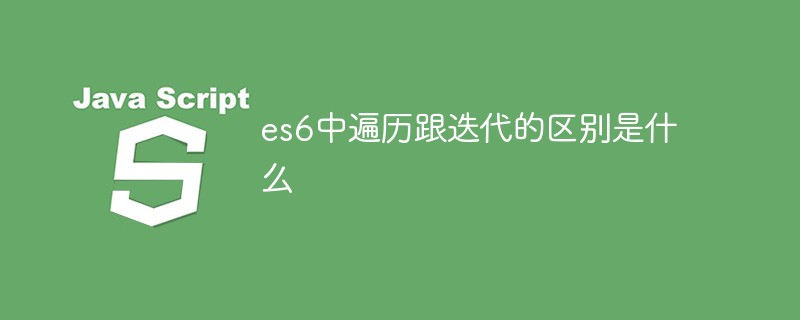 es6中遍历跟迭代的区别是什么Apr 26, 2022 pm 02:57 PM
es6中遍历跟迭代的区别是什么Apr 26, 2022 pm 02:57 PMes6中遍历跟迭代的区别是:遍历强调的是要把整个数据依次全部取出来,是访问数据结构的所有元素;而迭代虽然也是依次取出数据,但是并不保证取多少,也不保证把所有的数据取完,是遍历的一种形式。
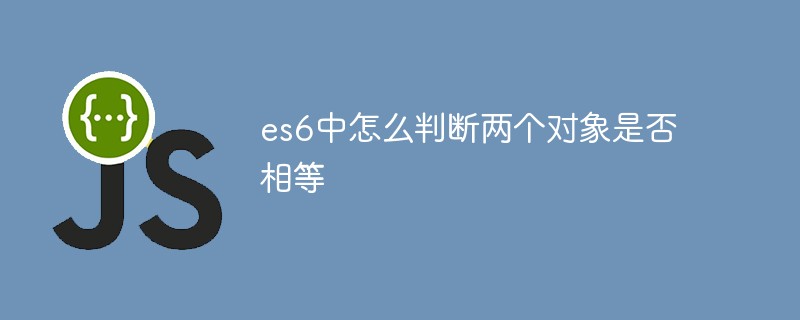 es6中怎么判断两个对象是否相等Apr 19, 2022 pm 03:34 PM
es6中怎么判断两个对象是否相等Apr 19, 2022 pm 03:34 PM在es6中,可用Object对象的is()方法来判断两个对象是否相等,该方法检测两个变量的值是否为同一个值,判断两个对象的引用地址是否一致,语法“Object.is(对象1,对象2)”;该方法会返回布尔值,若返回true则表示两个对象相等。
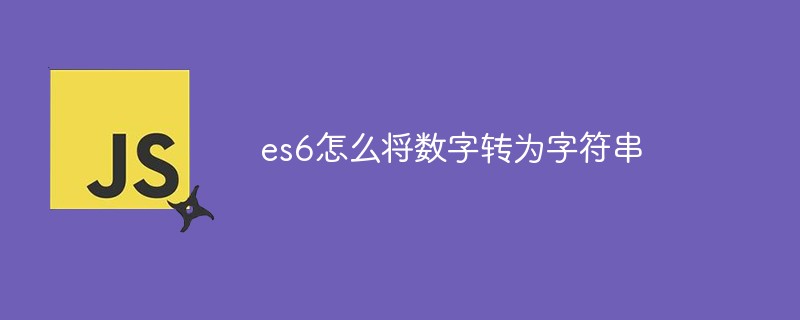 es6怎么将数字转为字符串Apr 19, 2022 pm 06:38 PM
es6怎么将数字转为字符串Apr 19, 2022 pm 06:38 PM转换方法:1、利用“+”给数字拼接一个空字符,语法“数字+""”;2、使用String(),可把对象的值转换为字符串,语法“String(数字对象)”;3、用toString(),可返回数字的字符串表示,语法“数字.toString()”。
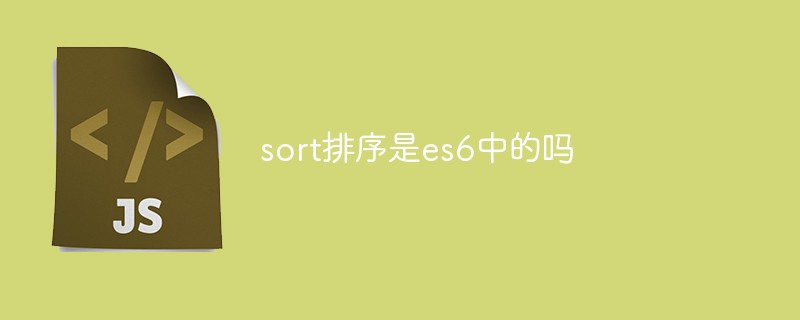 sort排序是es6中的吗Apr 25, 2022 pm 03:30 PM
sort排序是es6中的吗Apr 25, 2022 pm 03:30 PMsort排序是es6中的;sort排序是es6中用于对数组的元素进行排序的方法,该方法默认不传参,按照字符编码顺序进行排序,排序顺序可以是字母或数字,并按升序或降序,语法为“array.sort(callback(a,b))”。
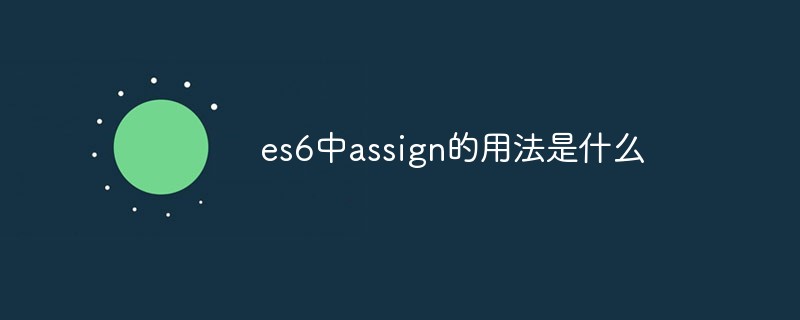 es6中assign的用法是什么May 05, 2022 pm 02:25 PM
es6中assign的用法是什么May 05, 2022 pm 02:25 PM在es6中,assign用于对象的合并,可以将源对象的所有可枚举属性复制到目标对象;若目标对象与源对象有同名属性,或多个源对象有同名属性,则后面的属性会覆盖前面的属性,语法为“Object.assign(...)”
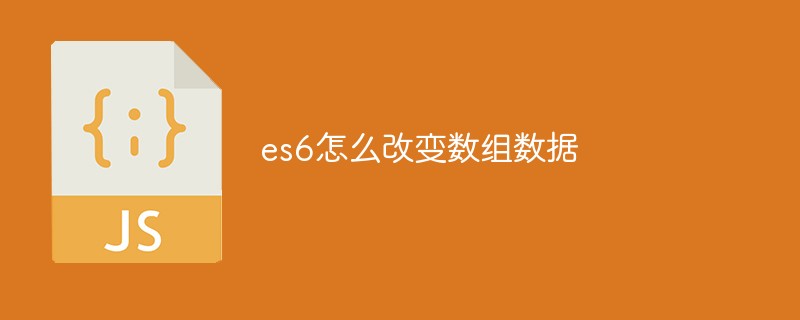 es6怎么改变数组数据Apr 26, 2022 am 10:08 AM
es6怎么改变数组数据Apr 26, 2022 am 10:08 AM改变方法:1、利用splice()方法修改,该方法可以直接修改原数组的内容,语法为“数组.splice(开始位置,修改个数,修改后的值)”;2、利用下标访问数组元素,并重新赋值来修改数组数据,语法为“数组[下标值]=修改后的值;”。
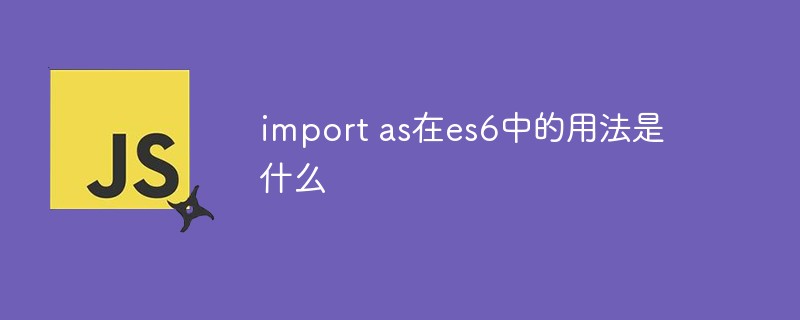 import as在es6中的用法是什么Apr 25, 2022 pm 05:19 PM
import as在es6中的用法是什么Apr 25, 2022 pm 05:19 PM在es6中,import as用于将若干export导出的内容组合成一个对象返回;ES6的模块化分为导出与导入两个模块,该方法能够将所有的导出内容包裹到指定对象中,语法为“import * as 对象 from ...”。


熱AI工具

Undresser.AI Undress
人工智慧驅動的應用程序,用於創建逼真的裸體照片

AI Clothes Remover
用於從照片中去除衣服的線上人工智慧工具。

Undress AI Tool
免費脫衣圖片

Clothoff.io
AI脫衣器

AI Hentai Generator
免費產生 AI 無盡。

熱門文章

熱工具

SublimeText3 Mac版
神級程式碼編輯軟體(SublimeText3)

SAP NetWeaver Server Adapter for Eclipse
將Eclipse與SAP NetWeaver應用伺服器整合。

MinGW - Minimalist GNU for Windows
這個專案正在遷移到osdn.net/projects/mingw的過程中,你可以繼續在那裡關注我們。 MinGW:GNU編譯器集合(GCC)的本機Windows移植版本,可自由分發的導入函式庫和用於建置本機Windows應用程式的頭檔;包括對MSVC執行時間的擴展,以支援C99功能。 MinGW的所有軟體都可以在64位元Windows平台上運作。

Dreamweaver CS6
視覺化網頁開發工具

WebStorm Mac版
好用的JavaScript開發工具






